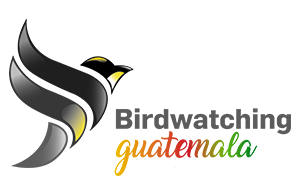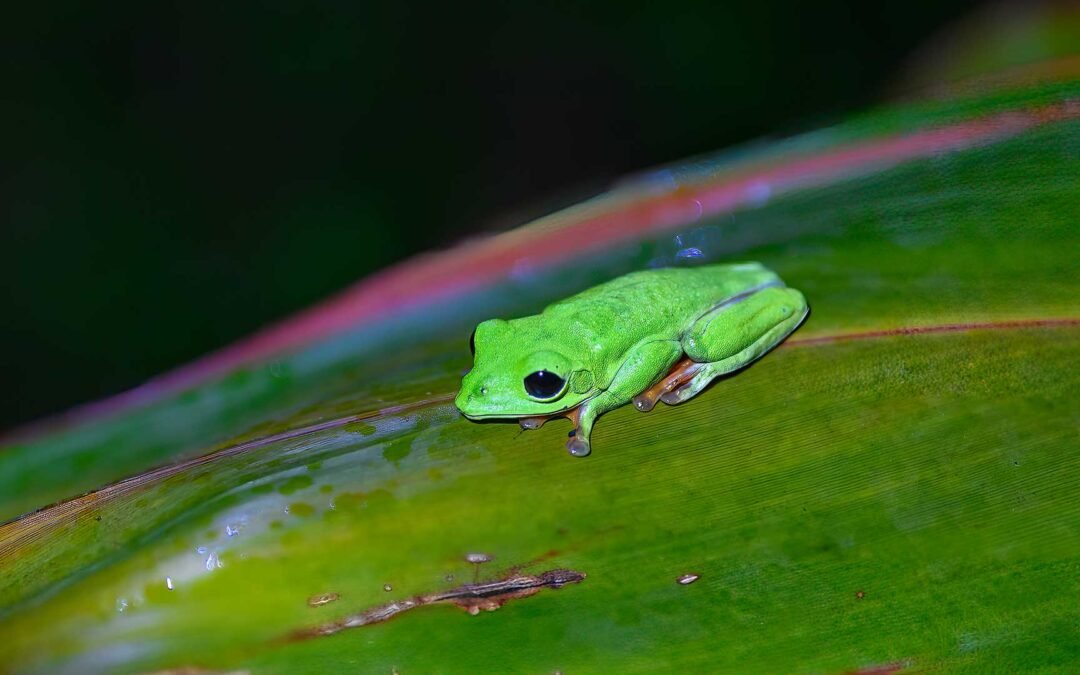Guatemala, located in Central America, is home to an extraordinary diversity of ecosystems and species. The country is a sanctuary for over 8,061 known species of amphibians, birds, mammals, fish, reptiles, and invertebrates. The wildlife of Guatemala features iconic animals like jaguars and the Resplendent Quetzal, a bird of great cultural significance. Protecting these natural wonders is essential for sustaining ecological balance. The ARCAS Wildlife Rescue Center is instrumental in conservation efforts. Embarking on a Guatemala Nature and Wildlife Tour or engaging in Birdwatching Guatemala provides an enriching educational experience. Capture breathtaking images through Guatemala Nature and Bird Photography while contributing to conservation initiatives.
Overview of Guatemala’s Ecosystems
Tropical Rainforests
Flora and Fauna
Guatemala’s tropical rainforests teem with life. The lush vegetation provides a habitat for countless species. Towering trees form a dense canopy. Beneath, vibrant plants and flowers flourish. These forests support a wide range of animals. Monkeys, jaguars, and colorful birds thrive here. The rich biodiversity makes these rainforests vital to the ecosystem.
Unique Species
Tropical rainforests host unique species, many of which are found nowhere else. The Resplendent Quetzal, with its striking plumage, is a notable example. This bird holds cultural significance in Guatemala. Other rare animals include the ocelot and the howler monkey. Conservation efforts aim to protect these precious species.
Cloud Forests
Endemic Species
Cloud forests in Guatemala are home to many endemic species that exist only in this specific environment. The cloud forests’ unique climate supports diverse wildlife. Amphibians, such as the Alta Verapaz spike thumb frog, thrive here. Many plant species also call these forests home. The cloud forests’ biodiversity is crucial for ecological balance.
Conservation Efforts
Conservation efforts focus on preserving cloud forests. Organizations work to protect these fragile ecosystems. Community involvement plays a key role. Local communities participate in conservation initiatives. Education and awareness programs promote sustainable practices. These efforts help safeguard the cloud forests for future generations.
Coastal and Marine Ecosystems
Marine Life
Guatemala’s coastal and marine ecosystems boast rich marine life. Coral reefs, mangroves, and seagrass beds provide habitats for various fish species. Sea turtles, dolphins, and manatees are familiar sights. The vibrant marine life attracts tourists and researchers alike.
Threats to Marine Biodiversity
Marine biodiversity faces several threats. Pollution and overfishing pose significant challenges. Climate change impacts ocean temperatures and sea levels, affecting marine habitats and species. Conservation measures aim to mitigate these threats. Protecting marine ecosystems ensures their survival and health.
Iconic Wildlife of Guatemala

Birds
Resplendent Quetzal
The Resplendent Quetzal captivates birdwatchers with its vibrant plumage. This bird, revered in Guatemalan culture, symbolizes freedom and beauty. The Quetzal thrives in the cloud forests of Guatemala, which provide the perfect environment for this magnificent creature. The gods protect the Quetzal, ensuring its presence in the forest. Birdwatching Guatemala tours often highlight this iconic species. Observing the Quetzal in flight offers a breathtaking experience.
Scarlet Macaw
The Scarlet Macaw adds a splash of color to Guatemala’s forests. This bird showcases brilliant red, yellow, and blue feathers. The Macaw’s loud calls echo through the trees. Birdwatching Guatemala enthusiasts seek out this striking bird. The Macaw’s presence enriches Guatemala’s biodiversity. Conservation efforts focus on protecting these birds from habitat loss. The Aurora Zoo plays a role in educating visitors about the Macaw.
Mammals
Jaguar
The Jaguar stands as a symbol of strength and power. This majestic predator roams the dense rainforests of Guatemala. Jaguars hold cultural significance in Mayan mythology. The Aurora Zoo provides a haven for these big cats. Jaguars face threats from habitat destruction and poaching. Conservationists work tirelessly to ensure their survival. Birdwatching Guatemala tours sometimes offer glimpses of these elusive creatures.

Baird’s Tapir
Baird’s Tapir, a gentle giant, inhabits the forests of Central America. This mammal resembles a cross between a pig and an elephant. The Tapir plays a crucial role in maintaining the ecosystem. The Aurora Zoo educates the public about the importance of Tapirs. Habitat loss poses a significant threat to their population. Conservation programs aim to protect these unique animals.
Reptiles and Amphibians
Guatemalan Beaded Lizard
The Guatemalan Beaded Lizard, a rare reptile with distinctive bead-like scales, fascinates herpetologists. It inhabits the dry forests of Guatemala. Conservationists strive to protect this endangered species. The Aurora Zoo participates in breeding programs for these lizards. Education initiatives raise awareness about their conservation.
Red-eyed Tree Frog
The Red-eyed Tree Frog enchants with its striking appearance. This amphibian boasts bright green skin and vivid red eyes. The frog’s habitat includes the rainforests of Central America. Birdwatching Guatemala tours often encounter these frogs. The frog’s presence indicates a healthy ecosystem. Conservation efforts focus on preserving their natural habitats.
Reptile and Amphibian Diversity
Guatemala’s rich biodiversity includes a remarkable variety of reptiles and amphibians. The country’s unique ecosystems support a high level of endemism among these species. Many of these creatures thrive in the lush environments of Guatemala, contributing to the ecological balance.
Alta Verapaz spikethumb frog
The Alta Verapaz spike thumb frog stands out among Guatemala’s amphibians. This species inhabits the cloud forests of the Alta Verapaz region. The frog’s unique adaptations allow it to thrive in this specific environment. Due to its limited range, conservationists focus on protecting the Alta Verapaz spike thumb frog.
Amphibian Encounters in Mayan Regions
Exploring the Mayan regions offers opportunities for amphibian encounters. The dense forests and waterways provide habitats for various species. Visitors can observe these amphibians’ vibrant colors and behaviors, highlighting the importance of preserving their natural habitats.
Reptile and Amphibian Encounters
Reptiles and amphibians face numerous challenges in Guatemala. Habitat loss and environmental changes threaten their populations. Conservation efforts aim to address these issues and protect these species.
Snake Declines Linked
Recent studies reveal declines in snake populations. Researchers link these declines to habitat destruction and climate change. Snakes play a vital role in controlling pest populations, and protecting their habitats ensures the balance of ecosystems.
Frog Fungus
A deadly fungus poses a significant threat to amphibians. This pathogen affects the skin of frogs, leading to population declines. Conservationists work to combat the spread of this fungus. Efforts include monitoring and research to develop effective strategies.
The Fuego volcano region provides a unique habitat for many species. The volcanic landscape supports a diverse range of reptiles and amphibians.
The Biosphere Reserve in this area plays a crucial role in conservation. Protecting these habitats ensures the survival of Guatemala’s diverse wildlife.

Conservation Challenges and Efforts
Threats to Biodiversity
Deforestation
Deforestation poses a significant threat to biodiversity in Guatemala. The loss of forests disrupts habitats for countless species—logging and agricultural expansion drive deforestation, reducing wildlife’s natural habitat. The Biodiversity Finance Initiative supports efforts to combat deforestation and promotes sustainable land management practices. Local communities engage in reforestation projects, aiming to restore lost habitats.
Climate Change
Climate change impacts Guatemala’s ecosystems. Rising temperatures alter habitats for many species, and changes in rainfall patterns affect water availability, threatening the survival of numerous species.
The Biodiversity Conservation in Guatemala program addresses climate change impacts. This program implements strategies to adapt to changing conditions. Conservationists monitor ecosystems to assess climate change effects. These efforts help protect biodiversity from climate-related threats.
Conservation Initiatives
Community Cloud Forest Conservation
Community Cloud Forest Conservation is vital in protecting Guatemala’s cloud forests. Local communities actively participate in conservation activities, including reforestation and sustainable land use practices. Education programs raise awareness about the importance of cloud forests.
The Biodiversity Net Gain Training program supports these initiatives. This training enhances the local capacity for effective conservation, and community involvement ensures the long-term success of conservation efforts.
Sea Turtle Conservation Guatemala
Sea turtle conservation efforts focus on protecting nesting sites. Volunteers patrol beaches to safeguard turtle nests, preventing poaching and habitat destruction. The Biodiversity Conservation Efforts program supports sea turtle conservation. This program provides resources for monitoring and protection activities. Local communities participate in conservation expeditions, promoting awareness and engagement in conservation efforts.
Role of International Organizations
Partnerships and Collaborations
International organizations play a crucial role in conservation. Partnerships enhance the effectiveness of conservation efforts. The Biodiversity Finance Initiative fosters collaborations with local stakeholders, strengthening conservation strategies. The Biodiversity Conservation in Guatemala program benefits from international support, which includes technical expertise and resources. Partnerships ensure the success of conservation initiatives.
Funding and Support
Funding is essential for successful conservation efforts. International organizations provide financial support for projects. The Biodiversity Net Gain program allocates funds for conservation activities. These funds support research, monitoring, and community engagement. The Biodiversity Finance Initiative secures funding for long-term projects. This initiative ensures the sustainability of conservation efforts. Financial support enables the implementation of effective conservation strategies.
Guatemala’s biodiversity holds immense value for ecological balance and human well-being. The diverse species, including Agave and Arpophyllum, contribute to vital ecosystem services. Expeditions offer a chance to witness this natural treasure firsthand. FLAAR MESOAMERICA and experts like Bethany Ivie emphasize the importance of conservation. You can support sustainable practices to protect these ecosystems. Expeditions in August provide unique opportunities to engage with nature. Learning more about conservation efforts ensures a brighter future for Guatemala’s wildlife. Your involvement in expeditions can make a significant impact.




